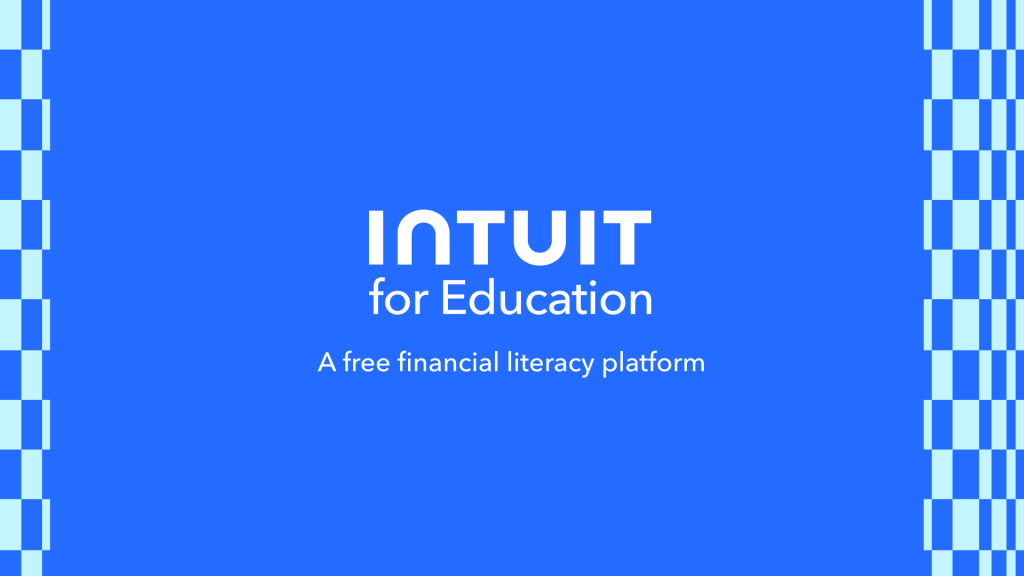The importance of teaching financial literacy to students
According to Intuit’s Financial Education survey, 81% of high school students get their financial knowledge from their parents or guardians. But approximately only 57% of adults in the U.S. are financially literate. This represents a financial knowledge gap for adolescents and how well they’re positioned to enter young adulthood with good financial habits.
As an organization that has been powering prosperity globally for more than 40 years, Intuit recognizes its unique opportunity to help the next generation and has set a goal to help 50 million students become more financially literate, capable, and confident by 2030.
Financial literacy education in the US
The financial literacy landscape in US schools is evolving, but there is room for significant improvement. On the positive side, there’s growing momentum.
As of 2024, 25 states guarantee their students will take a stand-alone personal finance course spanning at least a semester. This is primarily driven by state legislation. However, there’s a big difference between having a financial literacy class and having an effective one.
Currently, many schools fall short in two key areas. First, some states mandate only weaving basic financial concepts into existing courses like math or economics. This fragmented approach often lacks depth and fails to equip students with the focused skills they need. Stand-alone personal finance courses would be a more comprehensive option.
Second, teacher training can be a hurdle even in schools with dedicated classes. Many lack financial expertise, making it a challenge to deliver engaging and relevant content. Providing teacher professional development options, training programs, and curriculum materials can empower educators to guide students toward financial responsibility.

Gaps in financial literacy education
While 25 states mandate financial literacy education, a closer look reveals a significant gap between policy and practice. Many states’ requirements are minimal, often incorporating basic financial concepts into existing subjects.
These statistics demonstrate an opportunity to make financial education more accessible. Strong financial knowledge empowers individuals to build wealth, manage debt, and achieve long-term financial goals.
Benefits of teaching financial literacy
Students who learn the concepts of financial literacy early set themselves up for success. The benefits are innumerable and can be both financial and non-financial. A few of the most impactful include:
- Empowered decision-making: Financial literacy equips students with the knowledge and skills to make informed choices about budgeting, saving, and investing. This translates into greater confidence when navigating financial products and services, reducing the risk of falling victim to predatory practices.
- Debt management: Understanding debt allows students to borrow responsibly and avoid getting trapped in high-interest cycles. Learning about credit scores, loan terms, and different repayment strategies empowers them to make sound financial decisions.
- Goal achievement: Financial literacy helps students set realistic financial goals, such as saving for college, a car, or a down payment on a house. By understanding how to track expenses, create budgets, and allocate resources, students can develop a roadmap for achieving their financial dreams.
- Reduced financial stress: Financial literacy promotes a sense of control over one’s financial well-being. Knowing how to manage money effectively reduces stress and anxiety.
- Lifelong financial security: Financial literacy equips students with the tools they need to navigate their finances over the long haul. Whether planning for retirement, managing a household budget, or making smart investment decisions, these skills contribute to long-term financial security.

Key components of financial literacy
True financial literacy revolves around five pillars: saving, budgeting, managing credit, managing debt, and investing. Let’s explore each topic in more detail to better understand the basics of teaching financial literacy.
Saving
This is the cornerstone. Saving allows you to build an emergency fund for unexpected expenses or a down payment on a house or car. It can also help you achieve your short- and long-term goals. Learning to set aside a portion of your income consistently, even if it’s a small amount, is a major step toward financial stability.
Budgeting
Think of a budget as your spending roadmap. It involves tracking your income and expenses to understand where your money goes. By creating a budget, you can allocate your income toward necessities, savings goals, and even some fun money. This empowers you to make conscious choices about spending and avoid unnecessary debt.
Managing credit
Credit can be a powerful tool, but you need to manage it responsibly. Building good credit allows you to qualify for loans with better interest rates, rent apartments, and even get certain jobs. Financial literacy teaches you to use credit cards and other forms of credit responsibly, pay your bills on time, and maintain a healthy credit score.
Managing debt
Debt isn’t inherently bad, but it’s important to understand different types of debt and manage them effectively. Learning about interest rates, minimum payments, and debt repayment strategies allows you to make a plan for tackling existing debt and avoid accumulating more.
Investing
Investing allows you to grow your money over time and reach your long-term financial goals, like retirement. Financial education teaches you about different investment options, risk tolerance, and diversification strategies. While investing may seem complex initially, understanding the basics empowers you to participate in the market and potentially build wealth.
Tips for teaching financial literacy to students
Several resources are available for teachers and administrators looking to teach financial literacy effectively. We’ll dive into some beneficial tools in the next section, but school staff can also pursue professional development in the realm of financial literacy to make their programs more impactful. Additionally, implementing these tips will help to bolster any formal education you and your team decide to pursue.

Make it real-world
Financial concepts can feel abstract. Make them tangible by connecting them to students’ lives. Use case studies and simulations or even have students create mock budgets based on realistic scenarios like renting an apartment or buying a phone.
Embrace technology
Use online tools and resources. Stock market simulators, budgeting apps, and interactive games can make learning fun and relevant. Many financial institutions offer free educational materials and presentations specifically designed for classrooms.
Get creative with activities
Ditch the traditional lecture. Facilitate debates on real-world financial news or have students create presentations on different investment strategies. Role-playing scenarios like negotiating a car purchase or comparing credit card offers can also be highly engaging.
Connect across subjects
Financial literacy isn’t confined to math class. Integrate concepts into history lessons by exploring historical economic events or discussing the economic impact of current events in your social studies class.
Partner with experts
Invite local financial professionals like bankers, investment advisors, or even entrepreneurs to speak to your class. Their real-world insights and experiences can be invaluable for students.
By incorporating these tips, you can transform your classroom into a springboard for financial literacy.
Tools to help teach financial literacy

Teachers responsible for financial literacy education in their local school district need not fret. There are many financial literacy tools available to help you communicate these important concepts to your students. A few platforms you might use include:
- Intuit for Education: Build financial confidence in your students through Intuit’s free flexible library of financial literacy resources. The curriculum teaches important concepts like personal finance through real-world tools and cutting-edge technology featuring real-world simulations.
- Khan Academy: The Khan Academy Financial Literacy course covers essential personal finance topics, including budgeting, saving, credit, loans, insurance, and investment strategies. It also addresses practical aspects of financial management, such as tax forms, employment benefits, and banking. The course aims to equip learners with the skills needed to manage their finances effectively and make informed decisions for a secure financial future.
- You Need A Budget (YNAB): YNAB is a more detailed budgeting app. It requires a lot of work upfront, but could be a great tool for teachers to show students what it takes to be truly responsible for their money and their own financial situation. Experts also feel there are other benefits to examining your own financial situation this intensely, like it may be enough to help you stick to your budget long-term.
Intuit for Education offers teachers a free financial literacy curriculum
Teaching financial literacy is an important part of what our students learn in today’s schools. Have you tried financial literacy programs before, but nothing seems to stick? Discover what financial education can look like when powered by the latest technology and teaching methods. Students can learn important concepts like budgeting and debt through engaging video modules, real-world simulations, and interactive games. Teachers can also provide real-world examples when it comes to understanding important topics like taxes through our free educational version of TurboTax. Explore how you can implement Intuit for Education’s financial literacy resources today.
